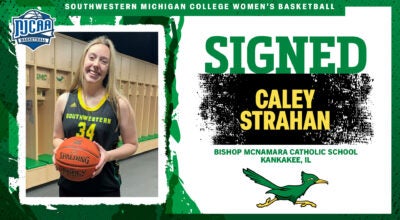Larry Lyons: Those pesky prairie trillium plants
Published 10:52 pm Tuesday, May 18, 2010
 The last few weeks the Niles Daily Star has been reporting on a pesky – at least to City officials – little plant that is hindering construction on a recreational trail in downtown Niles.
The last few weeks the Niles Daily Star has been reporting on a pesky – at least to City officials – little plant that is hindering construction on a recreational trail in downtown Niles.
A rare Michigan plant called the prairie trillium has the audacity to be growing right where the trail was to be built. It’s officially listed as a state threatened species so can’t be tampered with in any fashion without a permit.
When I heard about this I was a bit taken aback for I’ve been studying and working with prairies for years and had never even heard of a prairie trillium. The only trilliums I knew of are woodland plants.
Looking into it I found prairie trilliums are, indeed, one of Michigan’s rarer plants with the only known sites right here in Berrien and Cass Counties. They grow in colonies and there are about 35 known areas. Oddly, these plants aren’t in open grasslands as their name would indicate, but in moist woodlands just as the common trilliums we see while tromping around in search of morel mushrooms.
So the obvious question is: why are they called prairie trilliums if they grow in the woods? To answer that we have to dig deeper. One of the reasons they are so rare here in Michigan is we are at the very northern fringe of their range. The heart of prairie trillium country is Indiana and Illinois where they are still quite common. From there they extend westward to Iowa, south to Louisiana and Alabama and east as far as Pennsylvania.
Their primary habitat is in the woodlands. However, back when much of their range was a mosaic of woods and prairies they also grew out in moist prairie areas. I’ll call on my imagination and speculate that way back when folks were wandering around putting names on strange, new plants it was easier to stroll in the prairies than crawl around in the gnarly, dense woodlands. This trillium was probably first seen in the prairies, so there you go. Of course, all the prairies long ago morphed into shopping malls and corn fields and the prairie trillium is now found almost exclusively in the woodlands.
Other than habitat, the prairie trillium has little in common with its showier kin. The leaves are a distinctly mottled light and dark green. The tiny, three petal flower is a deep maroon color as opposed to the large, showy white flowers of the common trillium. This maroon color prompted commonly used names such as bloody noses and bloody butchers.
They bloom from early May into June so now is prime time to look for them. If you’re inclined, go to damp forests or moist, wooded ravines consisting mostly of sycamore, maple, beech and red oak trees. Ground plants often associated with prairie trilliums are those you typically see mushroom hunting, may apple, false Solomon’s seal, wild geranium, spring beauty, jack-in-the-pulpit and dutchman’s breeches to name a few.
Remember, here in Michigan look but don’t touch. Michigan is the only state to officially list them as a state threatened species which gives them legal protection. All the other states at the very fringes of their range simply call them rare.
The prairie trillium starts life as a seed surrounded by a berry-like cover. Ants harvest and take them into their tunnels and eat the berry but leave the seed, in effect planting it. The new sprout won’t surface until its second year. It will then be four to five more years before the plant flowers. It also sends out rhizomes from which other plants may sprout. Colonies from these rhizomes can consist of several thousand plants but here in Michigan it’s usually less than a hundred.
Habitat disturbance such as logging threatens prairie trilliums as this opens the door for invasive species such as garlic mustard and dames rocket that can crowd it out. Only 11 of Michigan’s 35 known sites are in parks or nature preserves, therefore protected from such threats. One of the most significant problems comes from deer, which absolutely love them. Deer browsing is attributed to the loss of many sites.
Carpe diem.
Larry Lyons writes a weekly outdoor column for Leader Publications.
He can be reached at larrylyons@verizon.net






